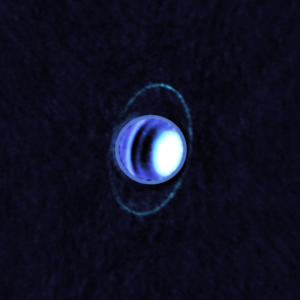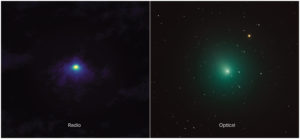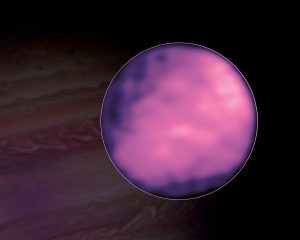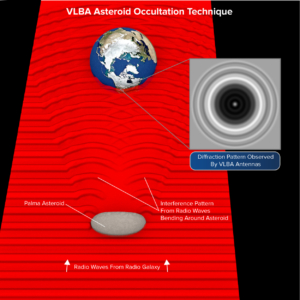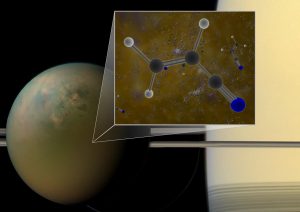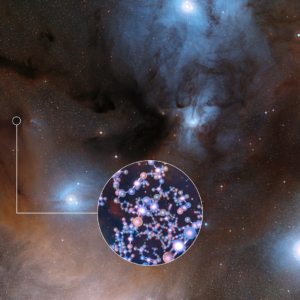Using the both ALMA and the VLT, astronomers have imaged the cold, rock-strewn rings encircling the planet Uranus. Rather than observing the reflected sunlight from these rings, ALMA and the VLT imaged the millimeter and mid-infrared “glow” naturally emitted by the frigidly cold particles of the rings themselves.
Image Release: ALMA Gives Passing Comet Its Close-up
As comet 46P/Wirtanen neared Earth on December 2, astronomers using ALMA took a remarkably close look at its innermost regions.
Image Release: ALMA Maps Europa’s Temperature
New ALMA images show never-before-seen surface details on Europa, including an enigmatic “cold spot.”
VLBA Measures Asteroid’s Characteristics
Astronomers used the VLBA in an unusual way to learn new details about an asteroid’s size, shape, and orbit.
ALMA Confirms Complex Chemistry in Titan’s Atmosphere
Saturn’s frigid moon Titan has a curious atmosphere. In addition to a hazy mixture of nitrogen and hydrocarbons, like methane and ethane, Titan’s atmosphere also contains an array of more complex organic molecules, including vinyl cyanide, which astronomers recently uncovered in archival ALMA data. Under the right conditions, like those found on the surface of Titan, vinyl cyanide may naturally coalesce into microscopic spheres resembling cell membranes.
One of Life’s Building Blocks Found around Infant Sun-like Stars
ALMA has observed stars like the Sun at a very early stage in their formation and found traces of methyl isocyanate — a chemical building block of life.






